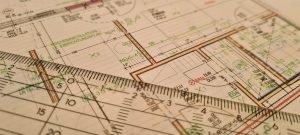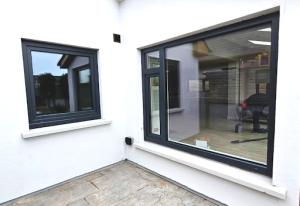Last Updated on February 11, 2025 by teamobn
The journey to making your dream home is exciting, yet challenging. Every stage requires detailed planning and lots of care.
Here is a comprehensive checklist to guide you through the complex self-building process, from initial concept to moving in…
Contents
The Pre-Construction Phase
Due Diligence
Check the planning history of the property and search for any restrictions or covenants that may be in place. Commission a detailed soil survey to establish likely ground conditions and foundation needs. Also verify the availability of utilities – water, electricity, gas, and sewerage – since connecting to services can significantly affect your budget if the site is remote or has access issues.
Planning
Planning permission forms the backbone of your project, so engage with local authorities early. Consider hiring a planning consultant to navigate complex regulations and increase your chances of approval.
Submit preliminary designs and be prepared to make adjustments based on feedback. Remember that some areas have specific requirements regarding building style, materials, or environmental standards that must be incorporated into your plans.
Finances
Give financial plans the same weight as technical ones. Draw a comprehensive budget, including but not limited to construction costs, professional fees, survey charges, warranty protection, and insurance. Add at least 10-15% contingency fund in case of unforeseen expenses.
Self-build mortgages involve the progressive release of funds stage by stage rather than one lump sum; find out how this works and understand the drawdown conditions and timing.
Project Team
The success of the project hinges upon assembling the right team. There’s the option of an architect, project manager, main contractor, or managing the individual trades yourself. Each has different implications in terms of cost, time commitment, and risk. Check credentials, insurance cover, and references.
At a minimum, you will require a structural engineer and building control inspector even if you manage the project yourself.
Future Proofing
Your current needs, added to those that may present themselves later, will have to be carefully thought over in this phase of the design. Contemplate room layout, traffic flow, storage requirements, and energy efficiency.
Think of features that would be more difficult to add later: underfloor heating, smart home wiring, among others.
Keep in mind your home orientation and how to maximize it in regard to natural light and passive solar gain.
Insert sufficient sound insulation between rooms and contemplate providing for any likely future changes/additions in one’s design.
Materials
The type of material selected will affect both the appearance and the performance of your home. Research building methods such as traditional brick and block, timber frame, ICF, or SIPs based on needs and priorities related to speed of build, thermal performance, and cost.
There is a big linkage in material selection between initial cost and long-term maintenance. Consider options that are more sustainable and offer savings in energy efficiency and environmental certification.
Site Prep
Site preparation and groundwork are literally and metaphorically the foundation of your build. Allow site clearance and provide adequate safe storage for materials, along with building any temporary facilities necessary for the workforce.
Provide good drainage while constructing, clearly identify paths or tracks that can be used by heavy machinery and outline – but do not physically define – the footprint of the building correctly, checking with your building control inspector beforehand, before commencing excavation.
The Construction Stage
Coordination
This sequence of construction does call for careful coordination within the different trades. Foundations and underground services lead to the structural frame, followed by the roof and the making of the building weathertight.
Following this, it is first fix, internal stud walls, electrical and plumbing roughing, insulation, plastering, second fix, fixtures, and fittings; finally, there is decorating.
Produce a detailed program showing the dependencies between the different activities; share with all contractors.
Quality Control
Quality control should be ongoing throughout the construction. Program regular building control inspections, and maintain records of all works completed.
Take photographs of services, such as drainage, before they are covered up; this is very useful for any future maintenance or to quickly rectify problems like a burst or blocked pipe.
Test the installations as the work proceeds rather than leaving everything to the end. Give particular attention to weathertightness, insulation continuity, and airtightness.
Health and Safety
Never neglect health and safety! Ensure your site is safe and properly signed. Keep records of risk assessments and method statements received from contractors.
Provide suitable welfare facilities for operatives, and maintain the site in a clean and tidy condition.
Be considerate to the neighbouring properties, minimizing disruption caused by noise, dust, and deliveries.
Services
The utilities and services have to be well planned in advance. Prepare the temporary site connections and schedule permanent service installation with the provider.
Allow for future maintenance access when routing pipes and cables; include spare capacity in electrical and heating systems to cater for the future.
Allow for modern demands such as electric vehicle charging points and high-speed internet connectivity.
Finishes
Interior finishes are really worth careful consideration, as they will dramatically affect the eventual feel of your home.
Draw up detailed specification documents for kitchens, bathrooms, and other fitted furniture.
Sample paints, tiles, and flooring in situ before making your final selections.
Consider maintenance requirements and durability, particularly in high-traffic areas.
The Post Completion Phase
Snagging
When finished, write out your snagging list comprehensively, of all items to be rectified before your final payment is made.
Collect warranties and certificates referring to everything. Obtain the completion certificate after a final inspection has been carried out.
If possible, contract for a professional clean prior to moving in.
Take meter readings and get utility accounts put into your name.
Handover
The handover procedure should therefore provide for a very detailed induction into all systems and controls. Understand how to work with heating, ventilation, or smart features of the house.
Also, understand the location of the important service isolation points and access to maintenance areas.
File all the documentation, including as-built drawings, warranties, and maintenance schedules.
Warranties
Other post-completion tasks are warranty registration, establishing maintenance contracts for complicated systems, and familiarization with the builder’s liability period. One should really draft a maintenance schedule so as not to allow their investment to deteriorate.
Maintain a record of any adjustments and modifications made in the initial occupation period; it may turn out to be really useful some time later.
If you follow this step-by-step checklist and stay organized along the way, you should be able to provide yourself with a home that meets your exact requirements while avoiding common pitfalls and unnecessary stress.
Remember, planning and documentation at each step pays dividends in not just the building but years later when you’re living in your new home.








